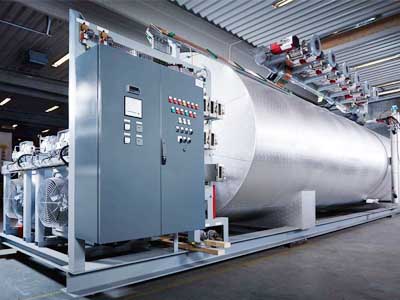Solución

Gas measurement in the chemical process industries is vital in safety, costs, environmental compliance, process control, product purity, production efficiency, environmental compliance. The inaccurate and inconsistent can lead to tremendous hazards that will cause dangerous gas leakage, emergency maintenance, government penalty, and even production shut down. The wrong measurements can add up shortly to large sums of money paying on knowledge.
Gas media measurement is more complicated than liquid media measurements. Here are four common gas measurements to introduce.
1.flow meter
Flow meters determine mass flow passing through the meter.
Gas distribution metering. Many chemical processes require large varying volumes of specific gases, such as nitrogen, argon and oxygen for inert ions or purging or blanketing. Hydrogen may be required as a catalyst and other specific gases are used as well. The accurate measurement of these gases is necessary for process control, gas-inventory control and cos
Coriolis flowmeters provide a direct mass flow measurement based upon the fluid’s deflection force moving through a vibrating tube. These meters are highly accurate with high turndown capabilities and are independent of fluid properties. They are also extremely expensive to purchase and install and are not suitable for larger pipe sizes.
Tank blanketing. Nitrogen blanketing is used in the chemical and petroleum refining industries to reduce the hazards associated with flammable liquids, which helps to support plant safety and can also increase productivity. Blanketing or padding is the process of applying inert nitrogen gas to the vapor space of a tank or vessel, which minimizes the possibility of an explosion or fire by reducing the oxygen content or the concentration of flammable or explosive vapors.
Flaring systems. In petrochemical production, refining and storage, flare gas systems are used to burn off and dispose of waste, excess or off-gases and as a safety system. The accurate, responsive and reliable measurement of flare gas is essential in order to assure proper operation of the flare gas system, which protects people and equipment from hazardous combustible gases to maintain a safe working environment and to avoid environmental contamination.
Stack gas monitoring. Measuring the output of plant waste gases through large stacks with scrubber systems requires multiple flow sensors, which are placed in strategic locations (Figure 4). These stack-gas systems are critical for ensuring environmental compliance. Stack continuous emission monitoring systems must meet local several standards
Thermal mass flow meters measure the mass flow based on heat transfer from a heated element. The measurement is in mass flow, and additional pressure and temperature correction are not required. They also provide excellent accuracy and repeatability and are easy to install.
2. Velocity
In a velocity meter type, the rate of the medium passing through the meter determines the measurement.
Ultrasonic Meter
Ultrasonic flow meters measure the difference in pulses transit time that travels from a downstream transducer to the upstream sensor, compared to the upstream transducer back to the downstream transducer. This style of meter is highly accurate but very expensive, and pressure and temperature measurements are required.
Capable for velocity measurements. The upstream and downstream accurate flow measurements require long and straight pipelines conditions. These straight pipelines may not be achievable in crowded production sites and process plants.
3. Differential Pressure Meters
Differential pressure. Differential pressure flow meters calculate flow by measuring pressure drop over an obstruction inserted in the flow path. Differential pressure (DP) meters and transmitters come in several designs, including orifice plates, pitot tubes and Venturis. The typical DP meter designs require the fluid to move through or past two points of reference, creating a differential pressure rate that is equivalent to the rate of flow using the Bernoulli equation with some modifications. If the gas is dirty, there can be orifice clogging issues that require frequent maintenance in order to maintain accuracy.
The pitot tubes type are used in high pressure flow measurement and not ideal for low pressure applications
The orifice plate is a differential pressure meter frequently used for natural gas measurement. It measures volumetric flow, not mass flow. This meter’s limitations include reduced low flow sensitivity, limited turndown, and a pressure drop, impacting operating costs. Additionally, since it’s a volumetric flow meter, it requires the correction of temperature and pressure to achieve mass flow.
4. Positive Displacement Gas Flow Meter
Positive displacement meters require fluid to displace components mechanically and measure volumetric flow at the operating temperature and pressure. While they have sufficient accuracy, pressure and temperature compensation are needed to achieve mass flow, and since they have moving parts, the user must consider gas cleanliness. A PD meter may be called a PD flow meter or a volumetric flow meter.
Things before selecting a measuring technique and transmitters
Gas-flow Measurement Consideration
Choosing the accurate, reliable flow measurement and sensing technology.
Sensitivity to low-flow conditions is required to identify and measure leaking valves and the normal low-flow operation associated with day-to-day operations.
Meter calibration. It is essential that flowmeters be calibrated specifically for hydrocarbon composition gases and to match actual process conditions.
Large pipeline. There are fewer effective and suitable flow sensing technologies for larger lines. It’s better to have an LCD display on the pressure transmitter and meters
Limited access. Access and re-access to piping for installation, maintenance, or servicing are frequently difficult. For example, spool-piece flowmeters can require prolonged process shutdowns and extensive onsite labor costs to install and continuously maintain the system, as opposed to insertion-style meters that can be easily inserted into or retracted out of the process through a ball valve.
Installation considerations
There are two ways to install a flowmeter: inline or insertion. Inline flowmeters must be installed horizontally inside a section of the pipe. Insertion flowmeters are top-mounted through a tap point. Some flowmeter technologies rely on direct mass-flow sensors. Other flowmeters infer mass flow and require pressure or temperature sensors to be installed nearby, along with transmitters, or multivariable transmitters, which can add to their cost and installation complexity.
Maintenance Consideration
Some Gas measuring requires regular maintenance to ensure the cleanness and exactness of the sensing part, Airtightness, easy installation, and disassembly also need to be considered. LEFOO pressure transducers and differential pressure transmitter that are capable of gas measurements in Chemical gas and natural gas pressure measurements and are easy to maintenance
 English
English  français
français  Deutsch
Deutsch  Español
Español  italiano
italiano  русский
русский  português
português  العربية
العربية  Türkçe
Türkçe  Zulu
Zulu 